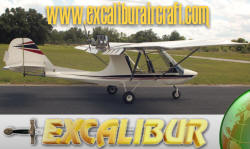|
 |
AIRCRAFT FUEL DRAIN VALVES, Curtis T
type. Mount in bottom of aircraft fuel tank for preflight testing of fuel. Made in
the USA. |
| PART# |
THREAD |
LENGTH |
EACH
U.S. |
|
|
#CCA-1250 |
1/8 NPT |
1 |
$14.95 |
|
|
#CCA-1550 |
1/8 NPT |
1.358 |
$14.95 |
|
|
#CCA-1600 |
1/4 NPT |
1.690 |
$14.95 |
|
|
#CCA-1650 |
3/8 NPT |
2.00 |
$16.95 |
|
|
#CCA-1700 |
1/2 NPT |
2.154 |
$16.95 |
|
| |
|
|
|
|
REPLACEMENT O RINGS
| PART# |
FOR |
EACH
U.S. |
|
|
#CCA-1269 |
CCA 1550/4850 |
$3.95 |
|
|
#CCA-1319 |
CCA 1600/4900 |
$3.95 |
|
| |
|
|
|
DRAIN HOSES: Attach to drain valve to
avoid mess
| PART# |
FOR |
EACH
U.S. |
|
|
#CCB-39600-2 |
1350, 1650, 4950 |
$19.95 |
|
|
#CCB-39600-5 |
1250, 1550, 4300, 7450, 9950 and
36750 |
$19.95 |
|
| |
|
|
|
 |
AIRCRAFT FUEL
TANK DRAIN VALVES, SAF-AIR pin
type. Mount in bottom of fuel tank for preflight testing of fuel. Made in
the USA. |
| PART# |
THREAD |
LENGTH |
EACH
U.S. |
|
|
#CAV-110 |
1/8 NPT |
.974 |
$9.95 |
|
|
#CAV-110H4 |
1/8 NPT |
w/1/4" hose ext |
$10.95 |
|
|
#CAV-160 |
1/4 NPT |
.974 |
$9.95 |
|
|
#M12175 |
1/8 NPT |
.974 |
$39.95 |
|
| |
|
|
|
|
 |
AIRCRAFT FUEL TANK DRAIN VALVES, SAF-AIR pin
type. Mount in bottom of fuel tank for preflight testing of fuel. Made in
the USA. |
| PART# |
THREAD |
LENGTH |
EACH
U.S. |
|
|
#CAV-170 |
7/16-20 |
.974 |
$9.95 |
|
|
#CAV-180 |
3/8-24 |
.974 |
$9.95 |
|
| |
|
|
|
|
|
Why you need a fuel tank drain valve.
|
On September 22, 2004, at 1530 eastern
daylight time, N2079S, a Pinkham, Challenger II, experimental
homebuilt airplane, registered and operated by a private owner as a
14 CFR Part 91 personal flight, collided with trees during a,
emergency landing following a partial loss of engine power near
Lancaster, South Carolina. Visual meteorological conditions
prevailed and no flight plan was filed. The airplane received
substantial damage. The commercial pilot reported serious injuries.
The flight originated from Jaars Townsend Airfield, Waxhaw, North
Carolina, on September 22, 2004, at 1500.
The pilot stated he was at the 2,000 feet, 3 miles north of
Lancaster, South Carolina, when the engine had a partial loss of
engine power. The engine rpm decreased to 3,800 rpm. The pilot
turned on the auxiliary boost pump, the rpm increased, and decreased
back to 3,800 rpm. The pilot pulled the choke out, the rpm
increased, and decreased back to 3,800 rpm. The pilot stated, "I
suspected fuel was not getting through the fuel line." The pilot
stated he was 2 miles from the approach end of runway 15 at
Lancaster, South Carolina, and loosing altitude. He knew he could
not make the airport, he observed a small field to his left. and
made a left turn for an emergency landing to the field. The pilot
stated, 'I misjudged my altitude during the approach and the right
wing collided with a tree. The airplane turned to the right, the
nose pitched down, and the airplane collided with the ground." The
pilot unlatched his seatbelt and shoulder harness and exited the
airplane unassisted. Emergency personnel arrived at the crash site,
and he was transported to the hospital. |
|
|
Ultralight Aircraft News.ca Web Magazine EMAIL for l Information.
No part of this
publication may be copied or distributed, transmitted, transcribed,
stored in a retrieval system, or translated into any human or computer
language, in any form or by any means, electronic, mechanical,
manual, or otherwise, without written permission of Ultralight Aircraft News.
By copying or paraphrasing the intellectual
property on this site, you're automatically signing a binding contract
and agreeing to be billed $10,000 payable immediately. Copyright Ultralight Aircraft News.ca EMAIL
|



